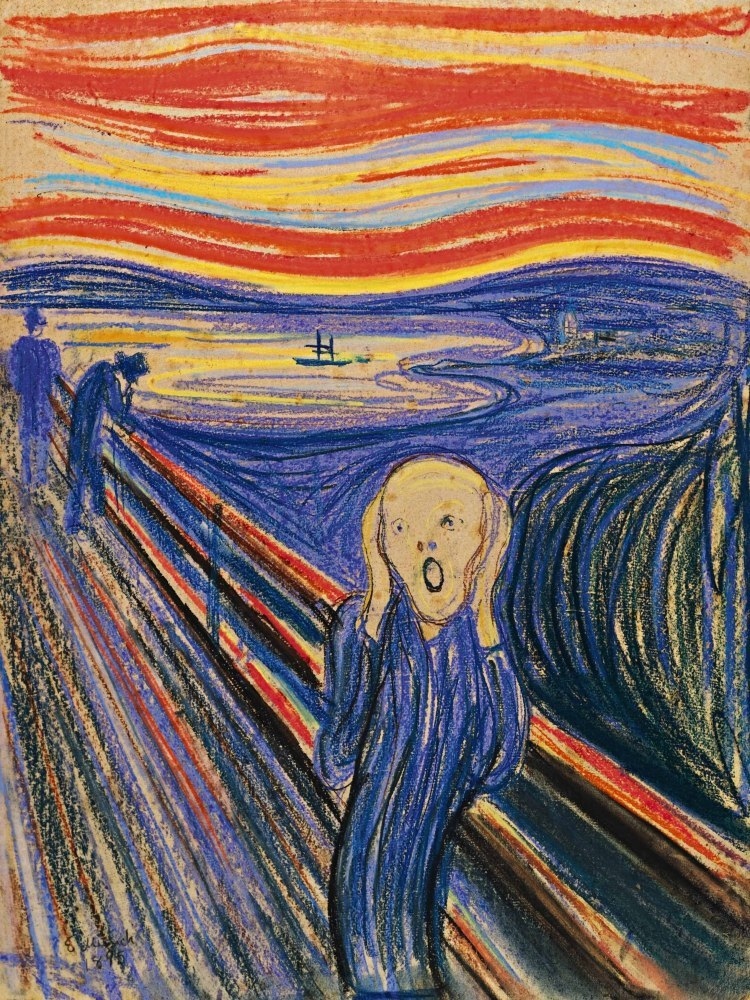The Scream
Edvard Munch's "The Scream" is a profound artwork that captures a personal crisis. This painting was created in versions from 1893 to 1910. It shows a figure in the grip of an overwhelming emotion.
Munch's inspiration came from a panic attack he experienced while walking in Kristiania (now Oslo). The sky turned red like blood, and he felt a great scream through nature. He said it was almost like he could hear the scream. This intense feeling is what we see in "The Scream."
The central figure is on a bridge with a background of swirling, fiery colors. This setting is where Munch felt nature's scream. The figure's face is twisted in fear, and its hands are on its cheeks. It looks like the world around it is whirling and twisting. Munch used wavy lines to show this movement. It makes the figure look trapped and alone in its fear.
Munch's use of lines and color is particularly striking. The undulating lines create a sense of movement and chaos. The use of red and orange hues not only represents the blood-red clouds but also adds to the overall feeling of panic. The contrast between the straight path of the indifferent figures and the tortured curves surrounding the central figure highlights the disconnection between the subject and the world.
Interestingly, Munch might have based the figure on an Inca mummy he saw in Paris. This adds a sense of timeless fear to the painting. The figure's friends are in the background, walking away, untouched by this fear. This shows how personal and deep the scream is. It's not about the outside world but what's happening inside the person.
"The Scream" is not just famous for its look. Its story is also gripping. It has been stolen twice and always returned. It's so valued that one version sold for $120 million in 2012. This shows how much people are drawn to this image of fear and anxiety. It's become a symbol of how modern life feels for many.
Key Takeaways:
- Title: The Scream
- Artist: Edvard Munch
- Year: 1893, 1895, 1910 (various versions)
- Medium: Oil, tempera, pastel, and crayon on cardboard
- Size: Around 91 cm × 73 cm (36 in × 28 3/4 in)
- Location: National Gallery, Oslo; Munch Museum, Oslo













